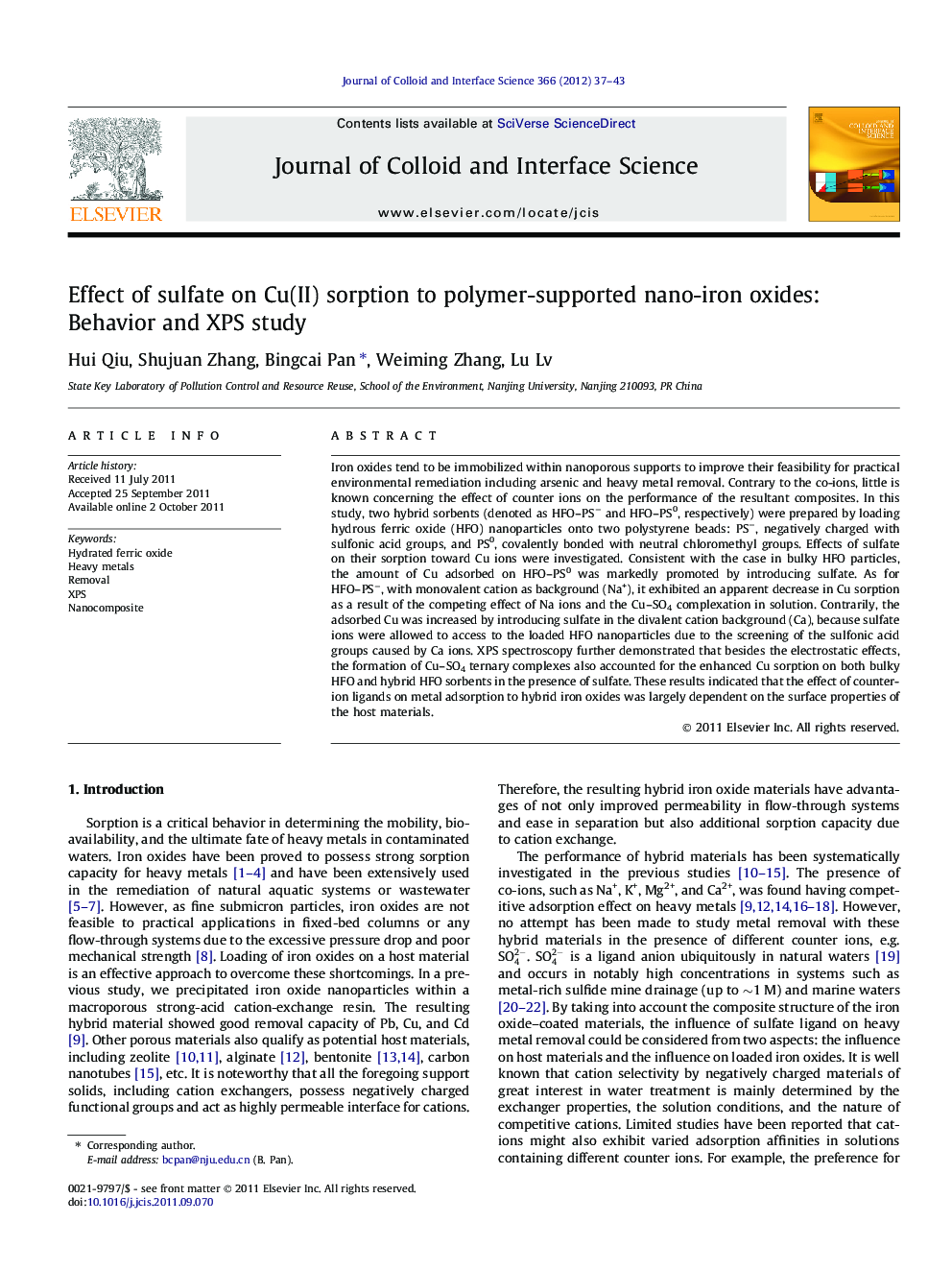| کد مقاله | کد نشریه | سال انتشار | مقاله انگلیسی | نسخه تمام متن |
|---|---|---|---|---|
| 608377 | 880587 | 2012 | 7 صفحه PDF | دانلود رایگان |

Iron oxides tend to be immobilized within nanoporous supports to improve their feasibility for practical environmental remediation including arsenic and heavy metal removal. Contrary to the co-ions, little is known concerning the effect of counter ions on the performance of the resultant composites. In this study, two hybrid sorbents (denoted as HFO–PS− and HFO–PS0, respectively) were prepared by loading hydrous ferric oxide (HFO) nanoparticles onto two polystyrene beads: PS−, negatively charged with sulfonic acid groups, and PS0, covalently bonded with neutral chloromethyl groups. Effects of sulfate on their sorption toward Cu ions were investigated. Consistent with the case in bulky HFO particles, the amount of Cu adsorbed on HFO–PS0 was markedly promoted by introducing sulfate. As for HFO–PS−, with monovalent cation as background (Na+), it exhibited an apparent decrease in Cu sorption as a result of the competing effect of Na ions and the Cu–SO4 complexation in solution. Contrarily, the adsorbed Cu was increased by introducing sulfate in the divalent cation background (Ca), because sulfate ions were allowed to access to the loaded HFO nanoparticles due to the screening of the sulfonic acid groups caused by Ca ions. XPS spectroscopy further demonstrated that besides the electrostatic effects, the formation of Cu–SO4 ternary complexes also accounted for the enhanced Cu sorption on both bulky HFO and hybrid HFO sorbents in the presence of sulfate. These results indicated that the effect of counter-ion ligands on metal adsorption to hybrid iron oxides was largely dependent on the surface properties of the host materials.
Figure optionsDownload high-quality image (112 K)Download as PowerPoint slideHighlights
► Sulfate plays a significant role in Cu(II) uptake by polymer-based nano-hydrated ferric oxide.
► Effect of sulfate on copper uptake varied with the host surface chemistry and the co-ions type.
► Formation of ternary complexes may be responsible for the effect of sulfate on copper uptake.
► Besides co-ions, more attention should be paid to the effect of counter ions on heavy metals removal.
Journal: Journal of Colloid and Interface Science - Volume 366, Issue 1, 15 January 2012, Pages 37–43